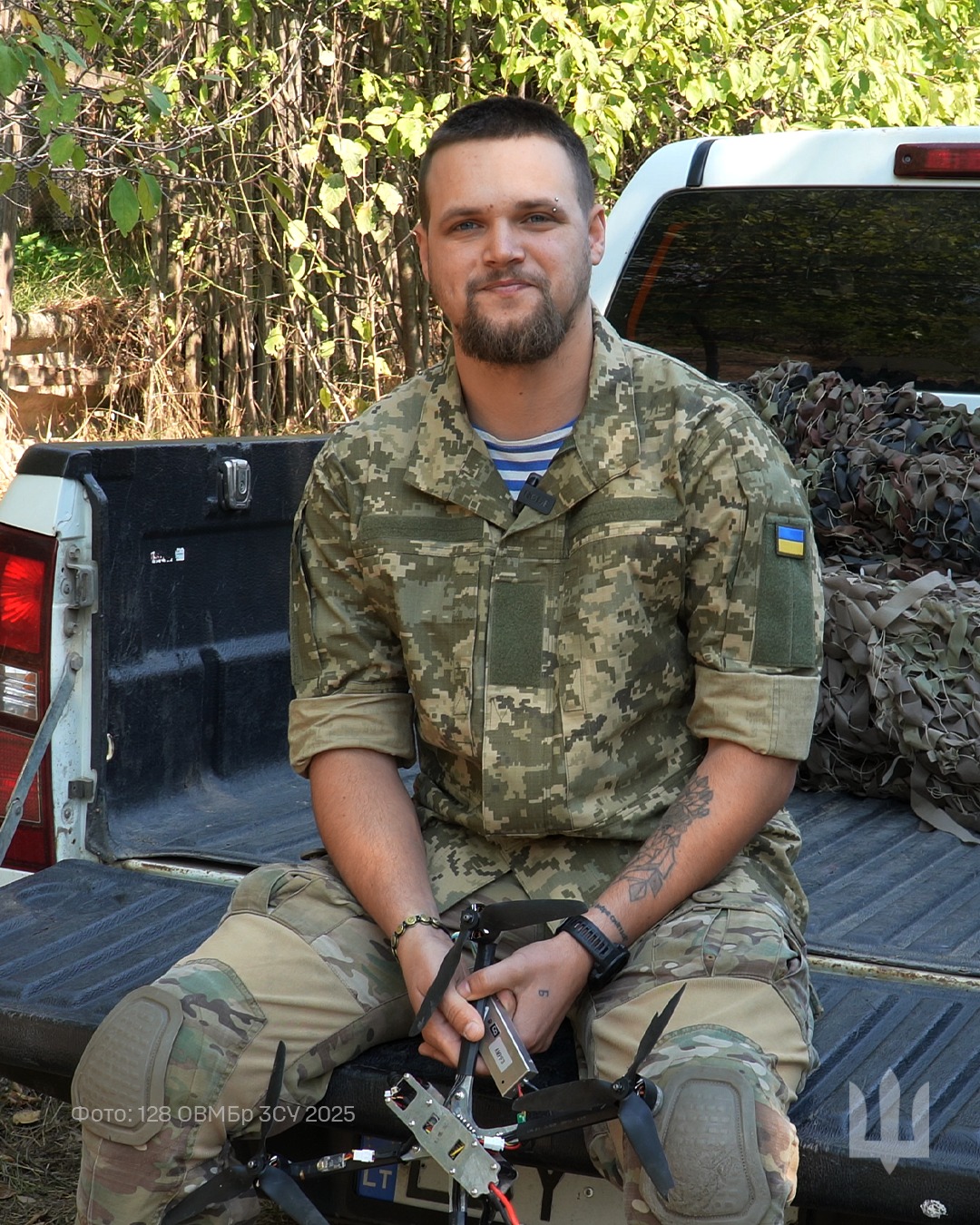Sometimes, the only way to stop an attack on the battlefield is with small arms in extreme conditions, the Operational Command “South” reports. This is exactly what happened with 24-year-old Ukrainian soldier Eduard, who shot down a Russian FPV drone with an automatic rifle while moving in the bed of a pickup truck at about 90 km/h.
This extraordinary event became a turning point in his career, eventually leading him to become a platoon commander of interceptor drones.
Eduard — from volunteer to platoon commander
Eduard joined the war as a volunteer in February 2022. His combat path took him from Bakhmut to participation in the Kursk operation, where the drone incident occurred. The case highlights the technical and physical difficulty of hitting a fast-moving drone with small arms from a moving vehicle.
Eduard recalls: “It was one chance in a million — to hit with a single shot, because I was in the bed of a pickup traveling across the field at about 90 km/h when a Russian FPV drone attacked us.” There was no time to think — he fired and hit the target.
Drone interception is a team effort
Following the event, Eduard rose from soldier to junior sergeant, mastered the role of platoon commander of interceptors, and is now preparing for the rank of junior lieutenant. Commenting on his successful interception, he emphasizes the importance of teamwork.
"If the engineer hadn’t equipped the drone with a bomb, if the second pilot hadn’t spotted the Russian drone and guided me, the UAV would have reached its target," he says.
Conclusion: adaptation and training are key to survival in modern warfare
Eduard’s story shows that modern war demands soldiers to be versatile: capable of shooting a moving small target, mastering drone systems, and working effectively in a team. Where jammers and C‑UAS systems fail, human ingenuity and coordination can save lives and thwart enemy attacks.




